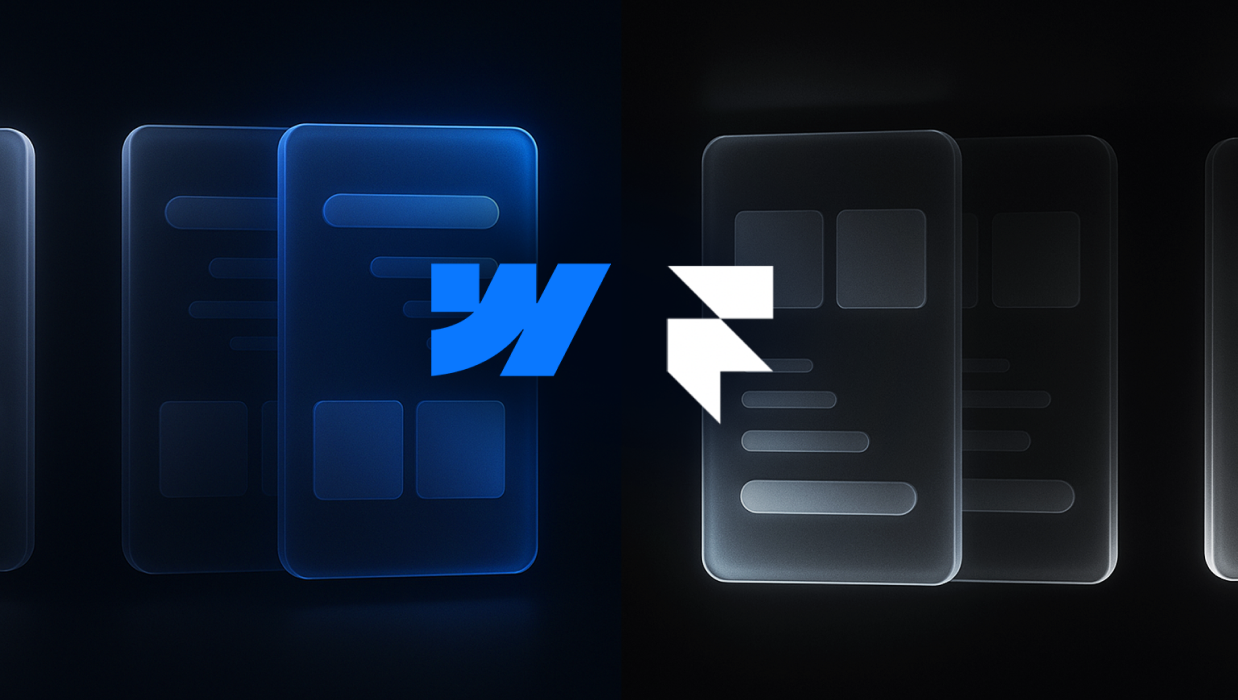
Webflow Glossary: Bridging the Communication Gap
Have you ever wondered what that floating thing on your website is called?
Or found yourself in a meeting with your Webflow developer, hearing terms that sound like they could be either technical jargon or completely made up?
You’re not alone! The world of Webflow and web design comes with its own unique vocabulary, and understanding these terms is crucial for effective communication between designers, developers, and clients.
Why We Need a Common Language
1. Avoiding Miscommunication
Imagine trying to explain to your developer that you want “that thing that follows you down the page” when what you really mean is a “sticky navbar.” Or picture your developer telling you they need to “set up collections and create a CMS template” while you’re still trying to figure out what CMS even stands for. These kinds of communication gaps lead to:
- Misunderstandings about project requirements
- Unnecessary revisions and feedback loops
- Increased project timelines
- Frustration on both sides
- Higher costs due to miscommunication
A shared knowledge base helps avoid these pitfalls. Webflow already created a Glossary to help users with technical terms, however, being both technical and understandable is a slippery slope, in fact, even developers can struggle sometimes especially with Webflow related terms because some are new or modified upon older web design terms. And so, by agreeing on common definitions, you’ll spend less time clarifying or understanding the terms and more time building and using your actual site.
2. Empowering Everyone on the Team
- For Customers
You’ll feel more confident discussing your website needs and better understand what’s possible within Webflow. No more silent Googling under the table! - For Designers
You can communicate your vision more effectively and ensure that crucial design intentions are understood and implemented correctly. It also means less guesswork for developers. - For Developers
You can explain technical concepts more clearly, ensure accurate requirements from the get-go, and reduce the need for multiple revisions due to miscommunication.
The Solution: A Comprehensive Webflow Glossary
To bridge the communication gap, We’ve created a comprehensive Webflow Glossary covering everything from the basics to advanced concepts and terms. The glossary we put together focuses on everyday use of the Webflow platform and what relates to it the real-world terms that come up in client meetings, project briefs, and casual discussions.
What’s Inside the Glossary
- Core Webflow-Specific Terminology
For example, understanding the difference between Hover and Mouse Over, or how Box Shadow can create that “floating” effect around elements. - Key Web Design and Development Terms
Get clarity on Class vs. Combo Class so you don’t have to guess whether you’re looking at a main style or a nuanced variation. - Visual Design Elements
Learn what navigators, style panels, and sticky navbars really are, so you can describe how you want your site to look and behave. - Interactive Components
Understand triggers, animations, and interactions so you can articulate how you want elements to respond to user actions (like clicks or scrolls). - CMS and E-commerce
Get up to speed on Collections vs. Items, how dynamic content works, and how to talk about your online store if you’re using Webflow for e-commerce.
Each term is explained in plain language to help clients, designers, and developers get on the same page quickly.
Get access to the Glossary
Where can you find this handy resource?
Fill in the form to get access to the glossary.
Inside, you’ll find:
- Over 100 commonly used terms
- Clear, jargon-free definitions
- Real-world examples
- Visual references where applicable
- Regular updates as Webflow evolves
Keep it handy for your next project, whether it’s a quick freelance gig, a major redesign, or a collaborative effort within your company. You’ll be amazed at how a shared glossary can minimize confusion and help you move faster.
Moving Forward Together
By adopting a shared vocabulary, we can:
- Create better websites and streamlined workflows
- Foster clearer communication between clients, designers, and developers
- Build stronger, more trusting relationships with each project
Remember, even seasoned Webflow professionals need a quick refresher from time to time, and there’s no shame in double-checking definitions. In fact, it’s a mark of professionalism to ensure everyone understands the core concepts. Have more terms you’d like to see added to the glossary? Feel free to reach out and suggest additions. Let’s keep growing this resource together.Happy building!
FAQs
More reads

A practical guide for B2B SaaS teams choosing between Framer and Webflow, with clear recommendations, real insights from our experts and the data you need to pick the right platform for your next stage of growth.
.png)
Picture this: A prospect asks ChatGPT about your B2B SaaS product. The AI pulls data from across the web and... finds nothing useful. Or worse, it shows outdated third-party content instead of your actual site. This happens more often than you'd think. But there’s a dead-simple fix.

The rise of AI is impossible to ignore. It’s everywhere, from creating hyper-personalized software to automating workflows that once required entire teams. While consumer tech is seeing the fastest shifts, the real question is this: will B2B SaaS survive the AI revolution, or will it have to reinvent itself completely?